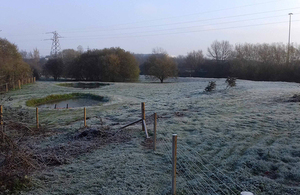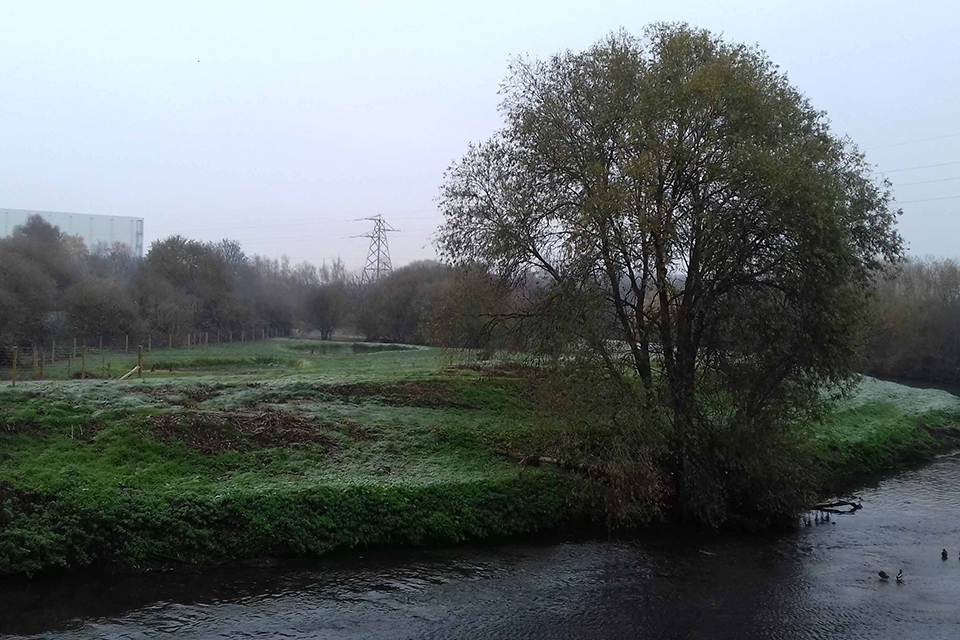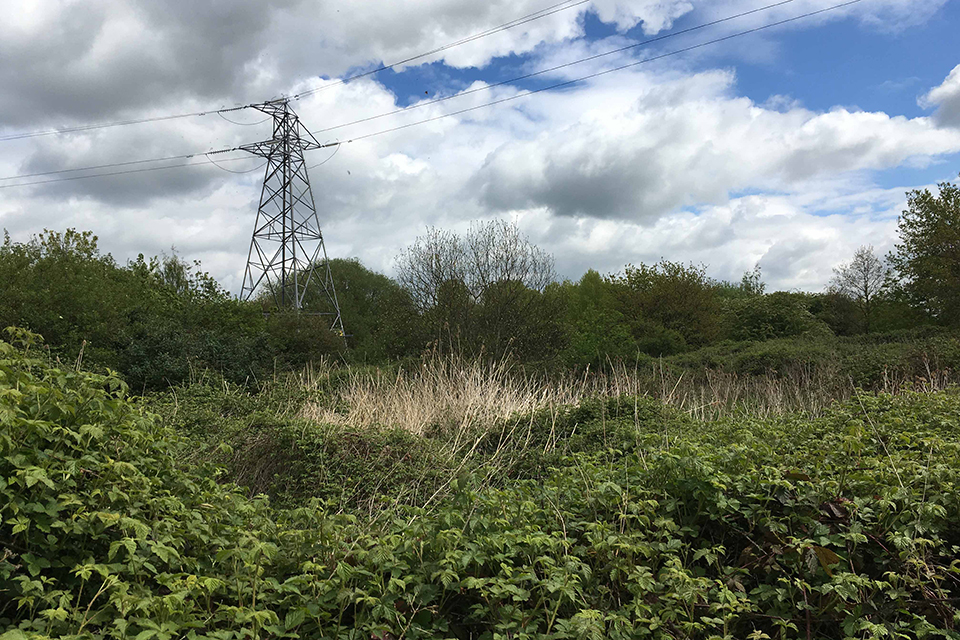Mother Nature given helping hand by HS2’s Green Corridor
An overgrown eyesore in North Warwickshire has been transformed into a wildlife haven as part of environmental works by High Speed Two (HS2) Limited.

A new grassland and wetland habitat created by HS2 in Coleshill, North Warwickshire.
Situated on the banks of the River Tame adjacent to a sewage works in Hams Hall, the 1.65 hectare (16,500 square metre) site north of Coleshill contains a mix of grassland and wetland habitat. The area is to be used for the translocation of 5 rare plant species, including marsh willowherb, yellow loosestrife, great burnet and bog stitchwort.
Native species
The site was previously rife with non-native Himalayan balsam, which can reduce the pollination of native species. The invasive plants were cleared earlier this year before Five Rivers Environmental Contracting Ltd installed new shallow ponds, known as scrapes, which are also designed to attract amphibians, such as newts and frogs.
A popular public pathway skirts the boundary of the new habitat, ensuring it is visible to locals and commuters walking to and from the Hams Hall Distribution Park.
As well as transforming the UK’s transport system, boosting the economy and unlocking new jobs and opportunities, HS2 aims to be one of the most environmentally responsible infrastructure projects ever delivered in the UK.

A new grassland and wetland habitat created by HS2 in Coleshill, North Warwickshire.
The Hams Hall site is one of more than 100 new wildlife habitats being created in the West Midlands and Warwickshire by HS2 Ltd, alongside landscape architects and ecologists, DJV (a joint venture of WSP and Ramboll) and the early works contractor, Birmingham-based LM JV (a joint venture of Laing O’Rourke and J Murphy & Sons Ltd).
Green Corridor
These sites form part of HS2’s Green Corridor, consisting of new wildlife habitats, native woodlands and community spaces. They will help integrate the new railway into its surrounding landscape and environment, and leave a lasting legacy of high quality green spaces all along the route. With the tree planting season now at an end, more than 350,000 trees have already been planted along the Phase One route (Birmingham to London).
Peter Miller, Environment and Town Planning Director, HS2 Ltd, said:
Managing our impact on the environment during construction is a high priority, and we are committed to building a railway that supports new wildlife habitats, woodlands and community spaces which future generations can enjoy.
Our Green Corridor programme, along with various funds available for affected communities along Phase One of the route have seen our work on the ground accelerate over the last 12 months as we prepare for the main works.
As work progresses on building the railway, this will continue and people will see new sites developed as we create a network of environmental and community projects along the route.
Covering 33 square kilometres, the Green Corridor will see HS2 plant 7 million new trees and shrubs on Phase One, with more than 40 different species of tree being grown in its nursery, including those native to each area the railway passes through.

Site in Coleshill, North Warwickshire before environmental mitigation works by HS2 took place
Other completed sites in the region include land near Stoneleigh Park where a training pond for otters has been created. The false riverbank includes an artificial holt and ensures that pups can safely adopt anti-predator behaviour and learn foraging and hunting skills, before they take to the waters of the nearby River Avon. Artificial burrows and perches are also provided for kingfishers for a similar purpose.
Roosting sites
The Stoneleigh Park habitat is also home to a bat house, which boasts a mix of roosting sites to attract different species. Ecologists predicted it would be 2 years before the building was occupied, but within weeks of it being installed, bats had already moved in.
Elsewhere, a new habitat near Burton Green in Warwick, will enable the relocation of a badger clan following the construction of a large artificial sett.
Andrew McPherson, Principal Landscape Architect, DJV, said:
Up and down the line of route we are creating new ecosystems that will allow native species to thrive. It may be Europe’s largest mega-project, but HS2 is also giving Mother Nature a helping hand and proving that biodiversity is at the heart of the new railway.
It’s not just plants and animals that we are focusing on, as much importance is being placed on preserving soil communities. Wherever possible, we are moving soil from the line of route to the new habitats to uphold the land’s unique nutrients and biodiversity value.
LM JV’s Ecology Manager, Dr Pamela Cramb, said:
Coleshill is an excellent example of the way new habitats have been established as we prepare the route for HS2. Across the West Midlands, we’re working with specialists to construct these sites and whether they’re in country areas or more urban locations, these initiatives are having a valuable and positive impact to the environment.
Community and business projects
In addition to the mitigation works, HS2 has a number of different funds and projects to support the environment and communities.
Community and Environment Funds and Business and Local Economy Funds have already contributed £2.5 million across 47 projects in 14 constituencies along the Phase One route.
A further £1 million has been allocated under the Woodland Fund, which will see 18 projects deliver 85 hectares of new woodland and 50 hectares of ancient woodland restoration.
Press and media enquiries
Contact form https://www.hs2.org.uk...
The press and media enquiries line is for accredited journalists only